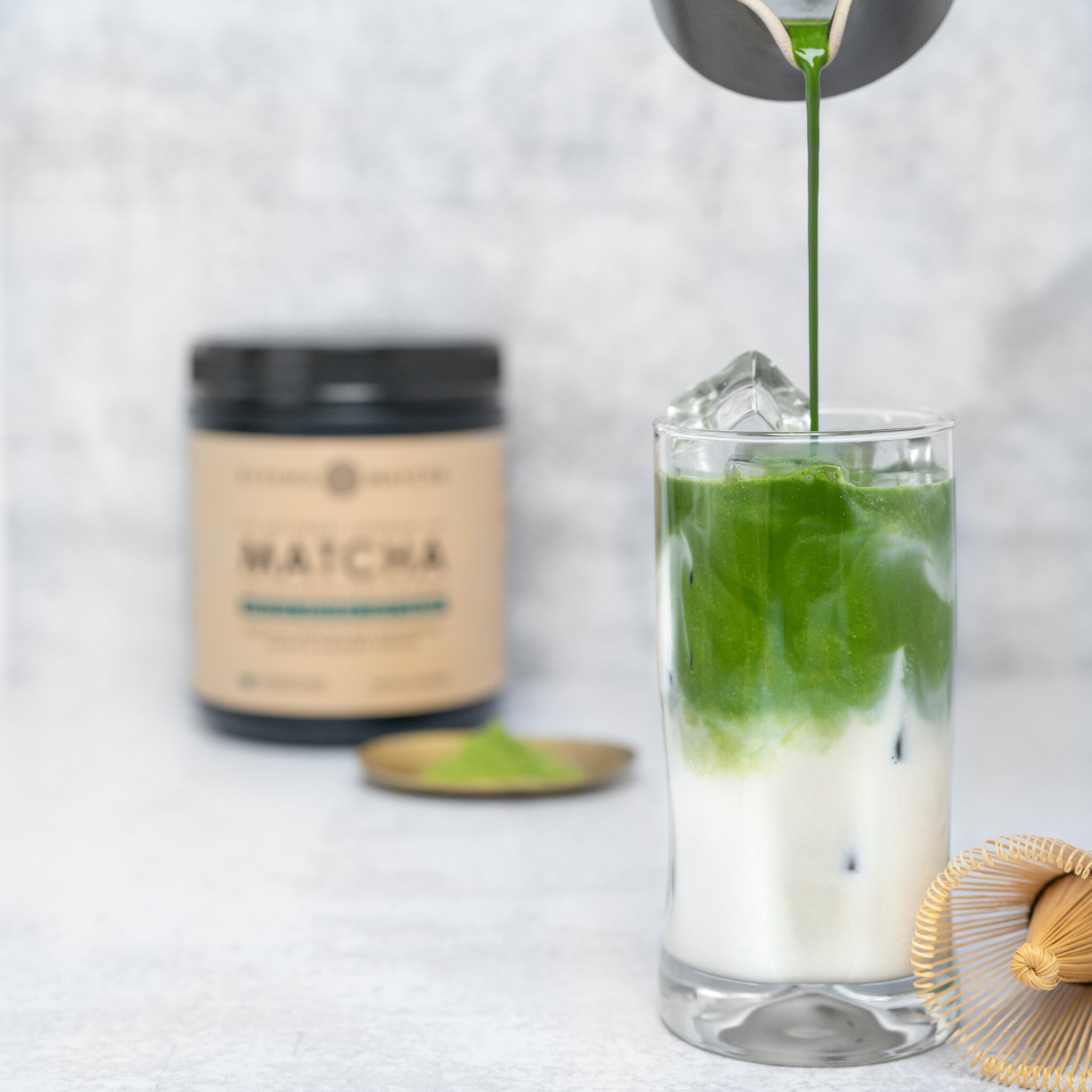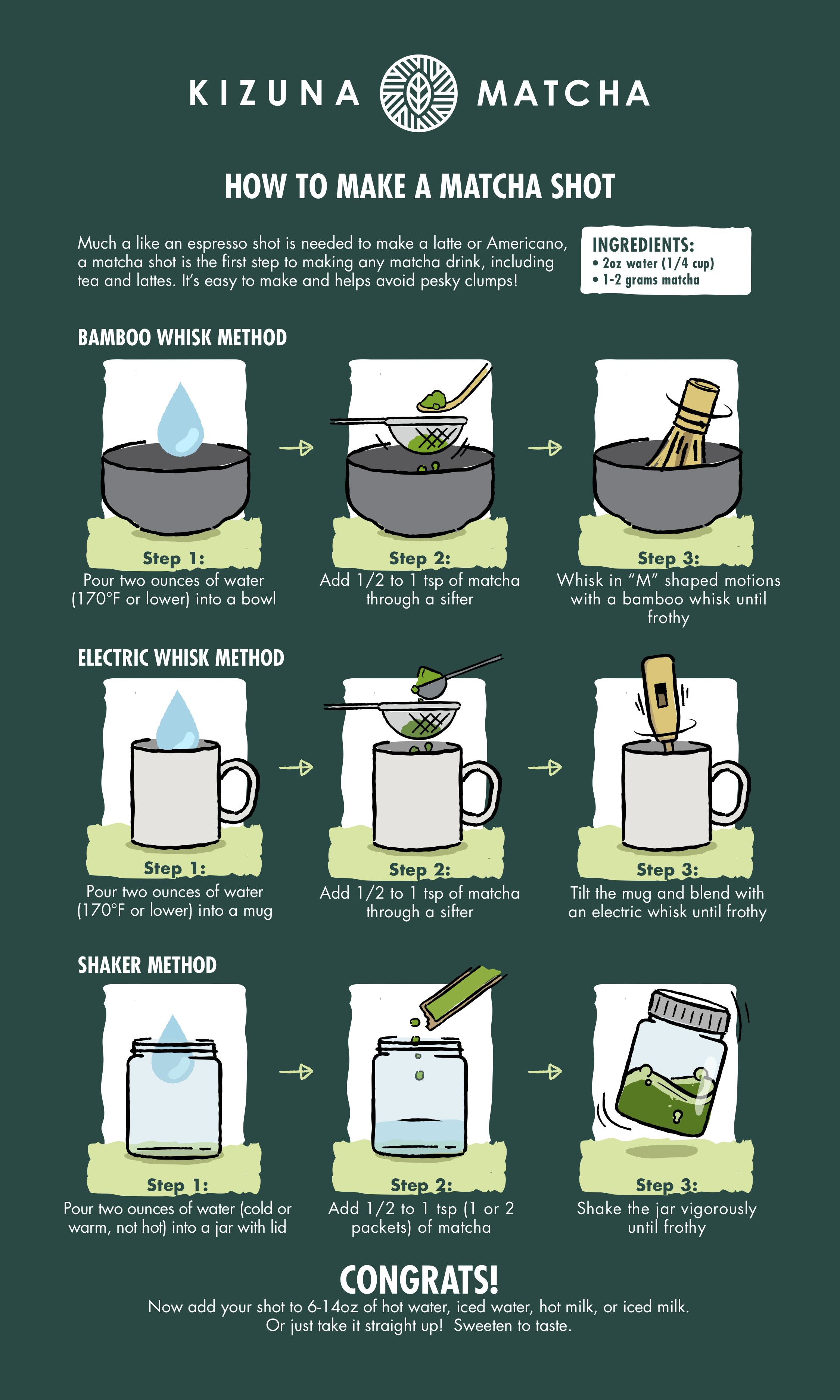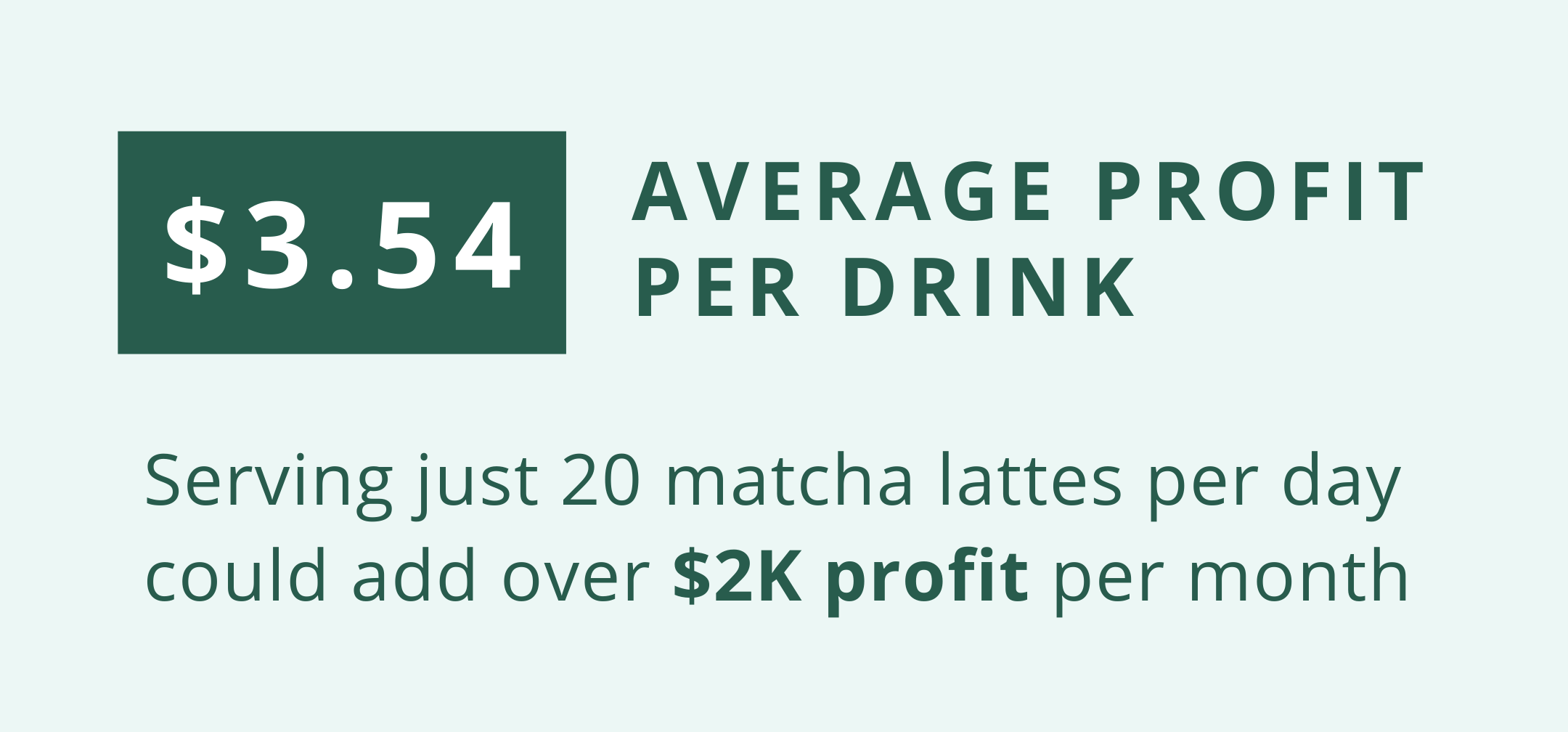Easily Add Matcha to Your Beverage Program
Matcha lattes are booming in cafes and restaurants across the country. But many owners still don’t know what matcha is or how to prepare it.
Sponsored content by Kizuna Matcha.
Making a matcha latte and marketing it to your customers is easier than you think. Most of your customers already know what matcha is thanks to companies like Starbucks and Dunkin Donuts. This menu item will drive a profitable new revenue stream for your business. Below, we answer the top questions asked by cafe owners when considering adding matcha to their menu.
What is matcha?
Matcha is the most premium variety of shade grown Japanese green tea leaves that are ground into a fine powder. Instead of steeping then discarding tea leaves as you do with loose leaf or tea bags, matcha powder is mixed into water or milk and consumed whole.
How is matcha served in a cafe or coffee house?
The most popular preparation by far is the matcha latte (matcha + water + milk + sweetener). These can be enjoyed hot or iced, which makes them a year-round menu item.
What’s a serving size of matcha?
Matcha is potent! Your typical matcha latte uses 1 teaspoon of matcha powder (two grams). That means 1 lb. (454g) of matcha will create about 227 servings. Even though a pound of matcha costs more than a pound of coffee beans, the cost per drink is often cheaper with matcha.
What’s the first step in making a matcha latte? The matcha shot!
Just like an espresso shot for a traditional latte, a matcha shot is the first step for a matcha latte. Simply add 1 teaspoon of matcha to 2 oz of water and whisk, shake, or blend until frothy. That’s it! Making a matcha shot is much quicker than pulling an espresso shot and can be done without a large machine. The only tool you need is a small mason jar or an electric whisk to get the job done. You can even make a batch of matcha concentrate in advance of the day’s service to pour shots from.
Which matcha should I purchase for my shop?
The earlier matcha tea leaves are harvested, the more vibrant green and smoother tasting they are (and also more expensive). Often you will hear the terms “ceremonial” and “culinary” to describe grades of matcha. However there is no regulation on these marketing terms, so sampling several grades and trusting your supplier is key. A matcha latte using the highest quality tea leaves will taste wonderful but can get expensive. Find a grade of matcha that hits your desired flavor and price point by requesting samples. Most of our customers prefer our Barista Edition - an affordable first harvest ceremonial grade crafted specifically for lattes.
How much can I sell a matcha latte for?
The average cost of a matcha latte is US$5 per drink. This price will vary depending on where your shop is located as well as specialty milks and size. Keep in mind that customers are willing to pay equal to or even a bit more than your traditional latte. At US$0.26 on average for matcha, US$0.90 per drink in specialty milk, and roughly US$0.30 for a cup, sleeve, and lid, you are looking at a gross profit per drink of US$3.54.
How long does matcha stay fresh?
Unopened matcha is fresh for about 18 months. This provides incentive for cafes to buy wholesale quantities and get the best deals from their matcha supplier. Once opened, however, we recommend using it within 2-3 months for the freshest taste.
What’s the best way to store matcha?
You want to avoid heat, light, and most importantly, air. The best storage method is to keep matcha in the original pouch or tin it comes in. Stash the matcha in the fridge when not in use. In the cafe, only open your main supply pouch once in the morning and pour the amount of matcha you think you’ll use that day. This way, you won’t expose the majority of your matcha to the elements every time a matcha latte is ordered.
How much caffeine is in matcha?
Each gram of matcha contains about 16-40 milligrams of caffeine. This is one third the caffeine found in a cup of brewed coffee. The caffeine amount depends on the grade, with ceremonial grades being more potent. Matcha also contains L-Theanine, an amino acid with a calming and leaving effect (no jitters!).
How can I make a matcha latte for summer?
Here’s a super simple iced matcha latte recipe you can start making today.
Ingredients:
1 tsp of matcha
2 oz water (room temperature or warm, not hot)
6-14 oz milk (plant-based or dairy... almond and oat are most popular)
Ice
Sweetener to taste (optional)
Directions:
Make a matcha shot. Add 2 oz water to a cup or jar, sift in 1 tsp of matcha. Whisk or shake your matcha shot until it's frothy.
Fill a tall glass with ice, pour in your milk, and top off with your matcha shot!
(Optional) Add sweetener - Simple syrup from cane sugar, honey, or agave works best for an iced drink.
Take a gorgeous photo of your Iced Latte and tag us @kizunamatcha or @jadeleafmatcha. Sip & enjoy!
Kizuna Matcha is not a tea reseller, but an actual manufacturer and matcha producer in Kyoto, Japan. The North American sales office is based in Seattle, Washington. Offering four grades of matcha ranging from first harvest to third, alongside their trusted organic brand, Jade Leaf Matcha, Kizuna is sure to have a blend that is right for your shop. They are currently offering a US$100 matcha voucher and 60-day terms to cafes and other food-service businesses. Learn more about the cafe comeback program today.







